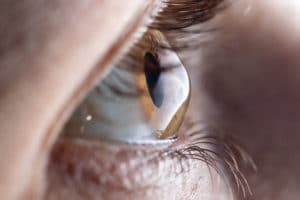Dispelling the Myths about Keratoconus
- Posted on: Apr 11 2022
 Have you ever heard of keratoconus? Keratoconus is a condition that affects the cornea. The cornea is the clear part of the front of the eye that covers the iris and the pupil. It is dome-shaped and bends light into the eye to help the eye focus. As the eye’s outermost layer, it also acts as a protective barrier.
Have you ever heard of keratoconus? Keratoconus is a condition that affects the cornea. The cornea is the clear part of the front of the eye that covers the iris and the pupil. It is dome-shaped and bends light into the eye to help the eye focus. As the eye’s outermost layer, it also acts as a protective barrier.
Keratoconus is a condition in which the cornea thins and gradually bulges out to a cone shape. This prevents incoming light from properly focusing on the retina, which causes visual distortions. There are many myths surrounding keratoconus. Here, Pamel Vision & Laser Group will dispel the myths about keratoconus.
1. You Can Only Develop Keratoconus When You Are a Teenager
Keratoconus often develops in people when they are young. It is typically detected in teens during puberty or in individuals in their early 20s. However, keratoconus progression peaks in people around age 40.
2. You Only Develop Keratoconus from Excessive Eye Rubbing
While keratoconus has been studied for a long time, its cause (or causes) remains unknown. Excessive eye rubbing has been identified as one of the possible causes. However, keratoconus has been linked to many other potential causes, including the following:
- Genetics
- Eye allergies
- Connective tissue disorders
3. Keratoconus Can Be Prevented
There is no known prevention for keratoconus. However, there are many treatments available. Treatments vary by the disease’s progression. If you are curious about these treatments, schedule an appointment with Dr. Gregory Pamel to discuss the available options and review the pros and cons of each.
4. Keratoconus Always Affects Both Eyes
Keratoconus usually affects both eyes. However, as it progresses it may affect one eye more than the other eye.
5. Keratoconus Progression Is Predictable
Studies are still trying to find accurate ways to predict keratoconus progression.
6. Keratoconus Causes Blindness
Keratoconus is a progressive condition that can impact vision. However, it is not a blinding condition. Common symptoms of keratoconus include the following:
- Blurred vision
- Sensitivity to bright lights
- Distorted vision
- Sudden prescription changes
- Poor night vision
- Double vision
- Halos around lights
7. Corneal Transplant Is the Only Treatment Option
Keratoconus is a condition that is highly treatable. In the early stages of keratoconus, most patients can see with glasses or soft contact lenses. Even as the condition worsens, specialty contact lenses are used to improve vision. Corneal crosslinking can also help delay the progression of the disease.
The corneal transplant procedure is only performed on patients with advanced keratoconus who cannot wear contact lenses or who would not improve with the corneal crosslinking procedure.
Discover Your Keratoconus Treatment Options
Are you suffering from keratoconus? Schedule a consultation with our board-certified ophthalmologist and corneal specialist, Dr. Pamel, to learn more about your keratoconus treatment options.
Posted in: Keratoconus




